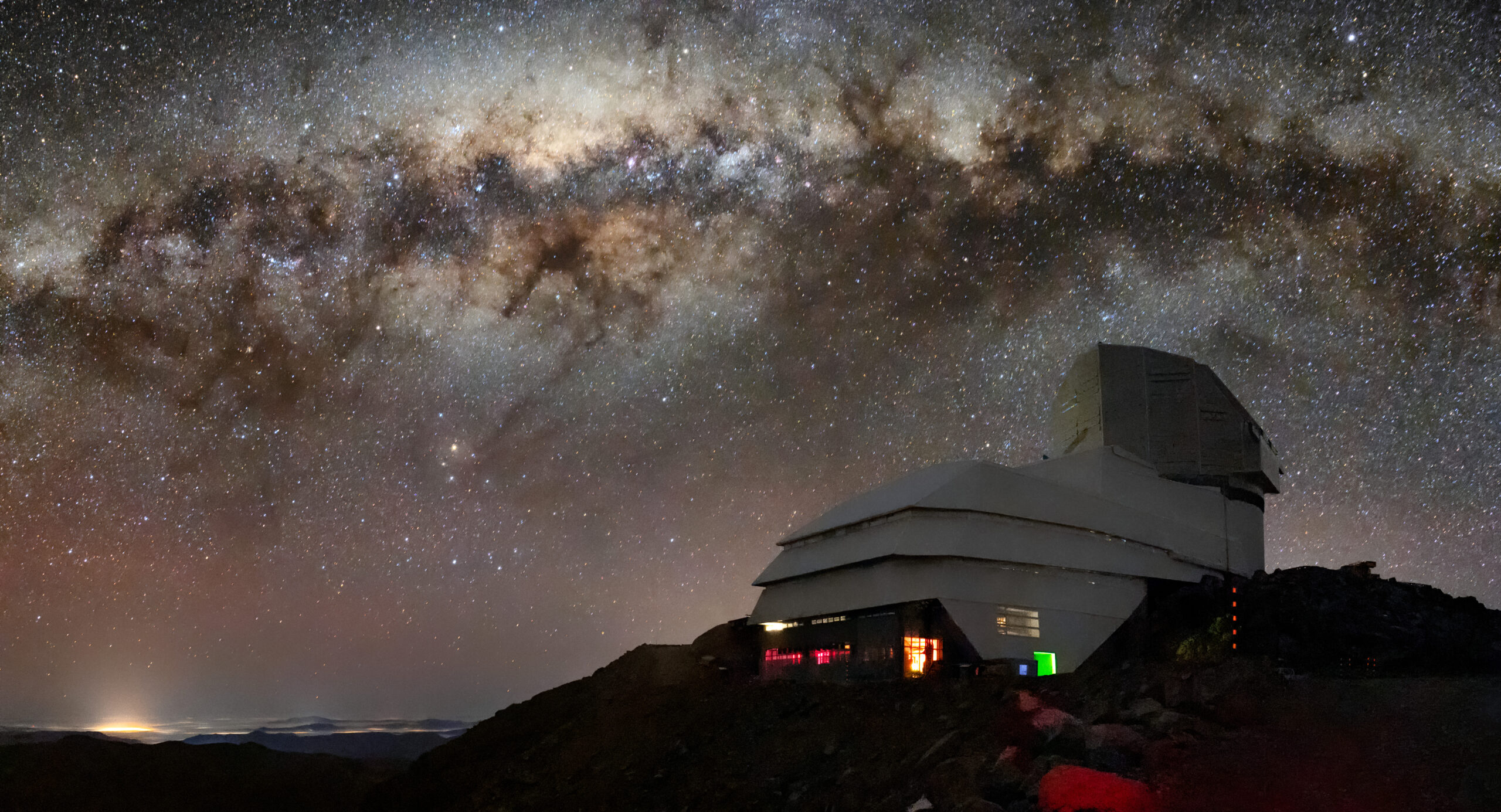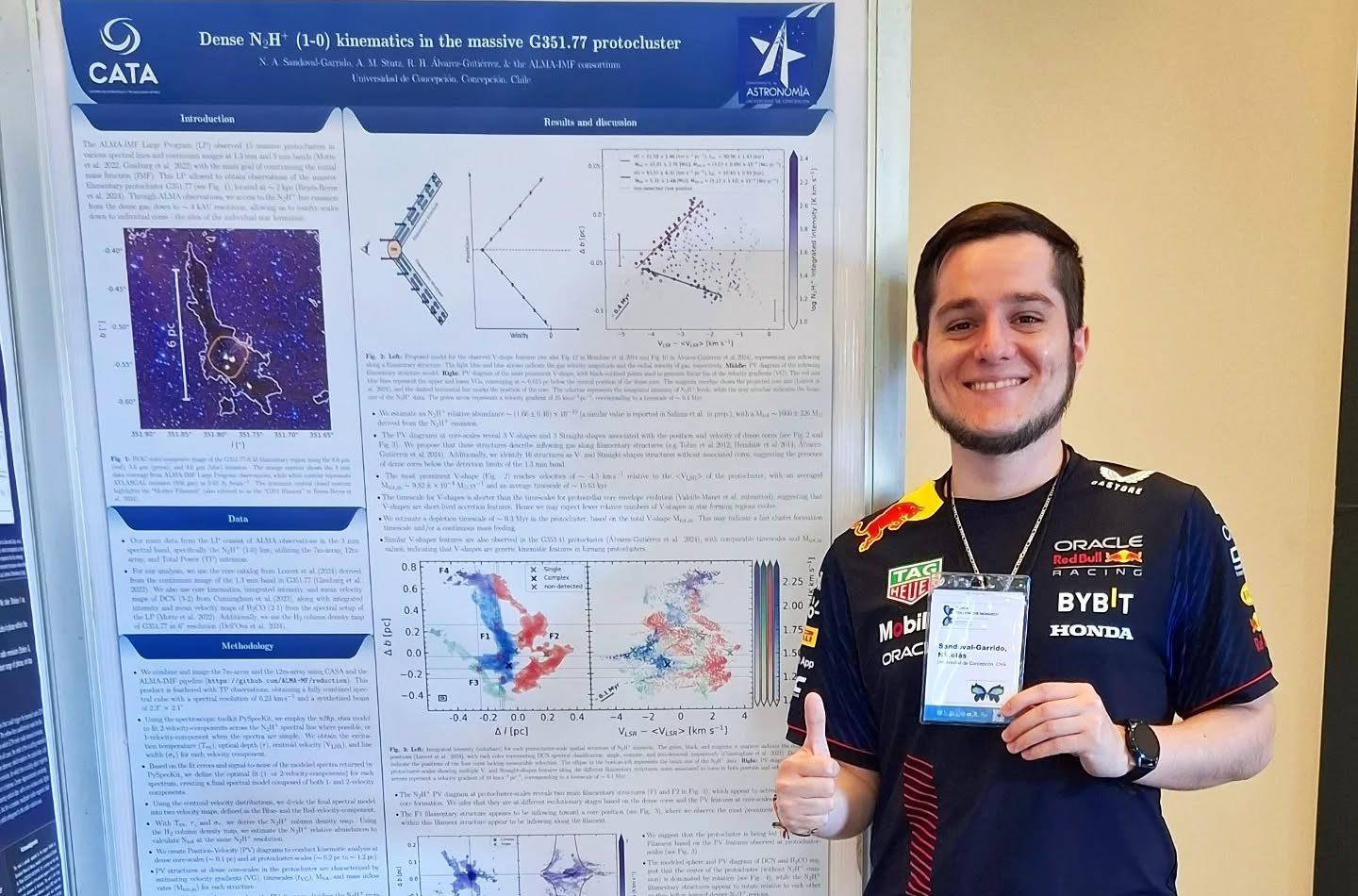
Mira star map covering half the galaxy created
A team of CATA astronomers generated an algorithm that allowed to significantly broaden the categorization of this type of stars, which serve as distance reference points in the Milky Way.
A group of researchers from the Center for Astrophysics and Related Technologies (CATA) managed to identify 3,602 Mira variable stars using data from the VISTA Variables in the Milky Way (VVV) project. These stars are particularly useful because they are used to study the structure, kinematics and extinction law of the galactic disk, especially on its far side.
Mira stars are like cosmic beacons because of their predictable brightness and well-defined pulsation periods. This study provides an unprecedented catalog in size and scope, extending the galactic rotation curve up to 17 kiloparsecs (half the size of the Milky Way or 55,000 light-years away) from the center of the galaxy. It also confirms that the galactic disk formed from the inside out.
The team was composed of Rogelio Albarracín, CATA astronomer and Master’s student at the Catholic University, who worked with the support of the Center’s Associate Researchers Manuela Zoccali and Marcio Catelán.
This is the first time that a catalog of this size focuses on the less studied regions of the galactic disk, combining infrared photometry and kinematic data to derive precise distances and chemical classifications (rich in oxygen or carbon).
This work expands our knowledge of the structure and evolution of our galaxy, relying on infrared photometry to overcome the limitations of optical observation in densely obscured regions. In general, the surveys are, to some extent, limited when one wants to see the more central regions of the Milky Way and the disk on the other side of the galactic center. That may mean that our entire view of how the Milky Way was shaped is being constructed based on what we have nearby, which may not be entirely representative of its full structure.
“In these public catalogs they do aperture photometry, which basically, is like opening a circle around each star and measuring around it. We decided to do PSF (Point Spread Function) photometry, which is to model, more or less, what the profile of the star looks like in order to better separate it from its surroundings. The objective is to achieve that, when you have many stars together in a very dense area in the sky, you can distinguish them in a better way”, says Rogelio Abarracín, CATA astronomer.
To further this study, the researchers generated an algorithm of Gaussian processes, which allows to separate the stars that are Miras from the rest.
“These stars are super interesting, because, only by characterizing their period very well, we can have a very good estimate of how far away they are and also know their age. So, it is possible, theoretically, to make a map of how the Milky Way was formed, just by looking at the different ages of the distribution of stars within the galaxy. And that also allowed us to establish a new extinction law, which is very useful for measuring distances. It is a new result, because it had not been done with this type of stars”, adds Rogelio Albarracín.
CATA’s support was fundamental in this process, since the group of researchers processed the information incorporated into the new algorithm using the Center’s Geryon 2 supercomputer.
“The project really would not have been possible without CATA’s help, otherwise I would still be waiting for the results. It meant going from almost two years of analysis on a normal computer to only two weeks. We would only be 15% of the way through the process if I had used my computer,” says the young researcher.
The results of this study were published in a paper entitled “Unveiling VVV/WISE Mira variables on the far side of the Galactic disk- Distances, kinematics, and a new extinction law”, which will soon be published by Astronomy&Astrophysics.
Recent news
-
 Publicado el: 30/06/2025CATA Director strengthens ties in her second institutional tour
Publicado el: 30/06/2025CATA Director strengthens ties in her second institutional tour -
 Publicado el: 26/06/2025Vera C. Rubin: the telescope that watches the sky and anticipates the future of astronomy
Publicado el: 26/06/2025Vera C. Rubin: the telescope that watches the sky and anticipates the future of astronomy -
 Publicado el: 25/06/2025CATA researchers appointed as Full Professors at Universidad Andrés Bello
Publicado el: 25/06/2025CATA researchers appointed as Full Professors at Universidad Andrés Bello -
 Publicado el: 25/06/2025Study by young Chilean astronomer reveals new key parameter for understanding star formation
Publicado el: 25/06/2025Study by young Chilean astronomer reveals new key parameter for understanding star formation -
 Publicado el: 19/06/2025Rubin: The Universe’s First “Movie” That Will Transform Astronomy
Publicado el: 19/06/2025Rubin: The Universe’s First “Movie” That Will Transform Astronomy
Categories list
- Acknowledgments 18
- Astrobiology 5
- AstroCluster 1
- Black holes 13
- Corporativo 49
- Cosmology 4
- Descubrimientos 19
- Disclosure 45
- Exoplanets 13
- Extension 4
- Galaxies 17
- Galaxies formation 2
- Inter y Transdisciplina 2
- Local Universe 13
- Publications 5
- Sin categorizar 31
- Solar System 11
- Stellar formation 6
- Technology 9
- Technology Transfer 12


